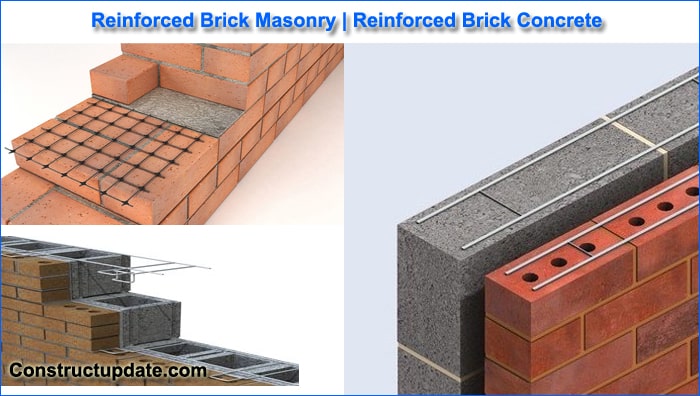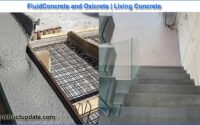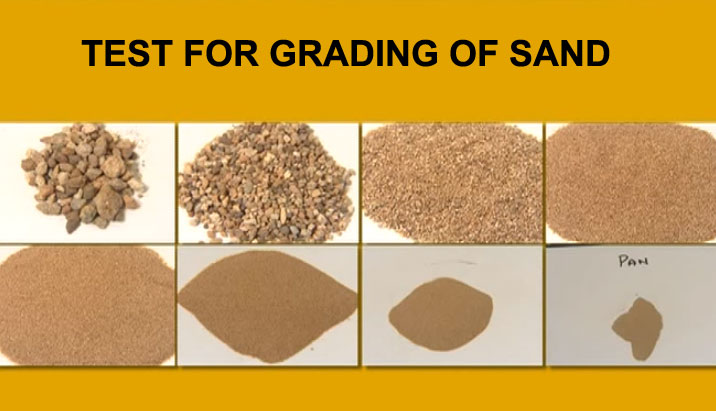Reinforced Brick Masonry (RBM) | Reinforced Brick Concrete | Reinforced Brick Wall and Column Construction
Reinforced brick masonry (RBM) consists of brick masonry which comprises metal reinforcement embedded in mortar or grout. This masonry has appreciably multiplied resistance to forces that produce tensile and shear stresses. The reinforcement gives extra tensile strength, permitting higher use of brick masonry’s inherent compressive strength. The two substances complement every other, ensuing in an top-notch structural material.
The concepts of strengthened brick masonry graph are identical as these in many instances familiar for strengthened concrete, and comparable formulae are used. In this article, we will learn about Reinforced Brick Masonry (RBM), its advantages, and the construction process of wall and column brick masonry.
What is Reinforced Brick Masonry?
In contrast to conventional bricks, which have reinforcement integrated into the mortar, reinforced bricks do not. A little amount of mesh or thin rods are used to reinforce the brickwork, which can sustain compressive as well as tensile shear pressures.
High-density cement mortar and first-rate bricks are typically used in reinforced brick masonry, which also aids in resisting lateral stresses. As a result, they are mostly employed in the building of structures in seismic zones. Additionally, compared to conventional bricks, reinforced bricks give the construction more stiffness and ductility.

Walls that need both vertical and horizontal reinforcement because they are subject to tensile stresses are built with reinforced bricks. Every third or fourth course should have horizontal steel mesh reinforcements that are consistently spaced, uniformly pressed, and constructed of steel mesh. Special bricks with grooves where the bars are to be inserted serve as vertical reinforcement. With a minimum of 15 cm to 25 cm of cover, both reinforcements must be protected.
Construction of retaining walls, cladding, flooring, roof panels, and the production of precast brick panels all frequently use reinforced brick masonry. Additionally, because labour expenses are much lower than with reinforced concrete, it is less expensive.
Applications of Reinforced Brick Masonry :
- It is utilised in piers and columns.
- Reinforced brickwork is preferred for brick arches.
- Today, brick slabs are constructed using reinforced brickwork.
- Additionally, strengthened beams employ it.
Reinforced Brick Masonry Advantages:
- Affordable housing
- A significant role for reinforced brick masonry during an earthquake
- cheapest labour rate
- It provides weather protection and is inexpensively managed.
- It strengthens our structure even further.
Reinforced Brick wall Construction Process:
- Tensile-prone walls need to be reinforced, and this strengthening must be done both horizontally and vertically.
- Every third or fourth course, horizontal reinforcement is offered, and it comprises of steel mesh that has been evenly spread out over cement mortar.
- The building of reinforced brick walls must be reinforced both horizontally and vertically since they are susceptible to tensile pressures.
- At every three to four courses, it is important to give horizontal reinforcement made of steel mesh.
- Special bricks with a large enough grommet to pass the reinforcing bars are used to give the vertical reinforcement.
- When conventional walls couldn’t meet a load requirement, reinforced brick walls were typically adopted.
- The reinforced brick wall’s wall thickness is kept to a minimum, and the bricks are set lengthwise, one after the other.
- It is crucial to install a plaster covering with a minimum thickness of 15mm after building a reinforced brick wall in order to shield the reinforcement from corrosive action.
Construction of the Reinforced Brick Column
- Special bricks with screws for vertical reinforcement were needed to construct reinforced brick columns, which boosted the column’s load-bearing capability.
- Vertical steel bars are used in the foundation concrete blocks and horizontal steel plates of around 6 mm thickness must be provided at every fourth course.
- In many construction projects, reinforced brick and reinforced brick concrete floors and roofs are used.
- In this kind of construction, the formwork with reinforcements is covered directly with high-strength bricks.
What Is Reinforced Brick Concrete?
strengthened brick Brick, reinforcing, and concrete are all combined to make concrete. Concrete is strong in compression but weak in tension.
The concrete found in the lowest portion of beams, lintels, and slabs below the neutral axis cannot withstand the load. This concrete only serves as a filler.
Therefore, bricks or tiles can be used in place of concrete in the tension zone to accomplish economy.
The installation of reinforced brick concrete roofs is typically observed in places with exceptionally high-quality brick availability.
Bricks absorb more moisture because they are porous. As a result, reinforced brick concrete absorbs moisture from the air when exposed to atmospheric conditions, stores it in the bricks, and then transfers it to the concrete joints.
The idea behind reinforced brick concrete is nothing more than the partial replacement of concrete with bricks.
When compared to reinforced cement concrete, reinforced brick concrete is shown to be somewhat more cost-effective since the bricks reduce the amount of concrete needed for construction.
Because steel had to be installed at broader spans in order to replace the bricks, the reinforced brick concrete also required less steel.
It has been noted that reinforced brick concrete costs between 25% and 30% less than reinforced cement concrete.
Because reinforced cement concrete is stronger than reinforced brick concrete, reinforced brick concrete is not suggested for use in the building of massive load-bearing structures.





